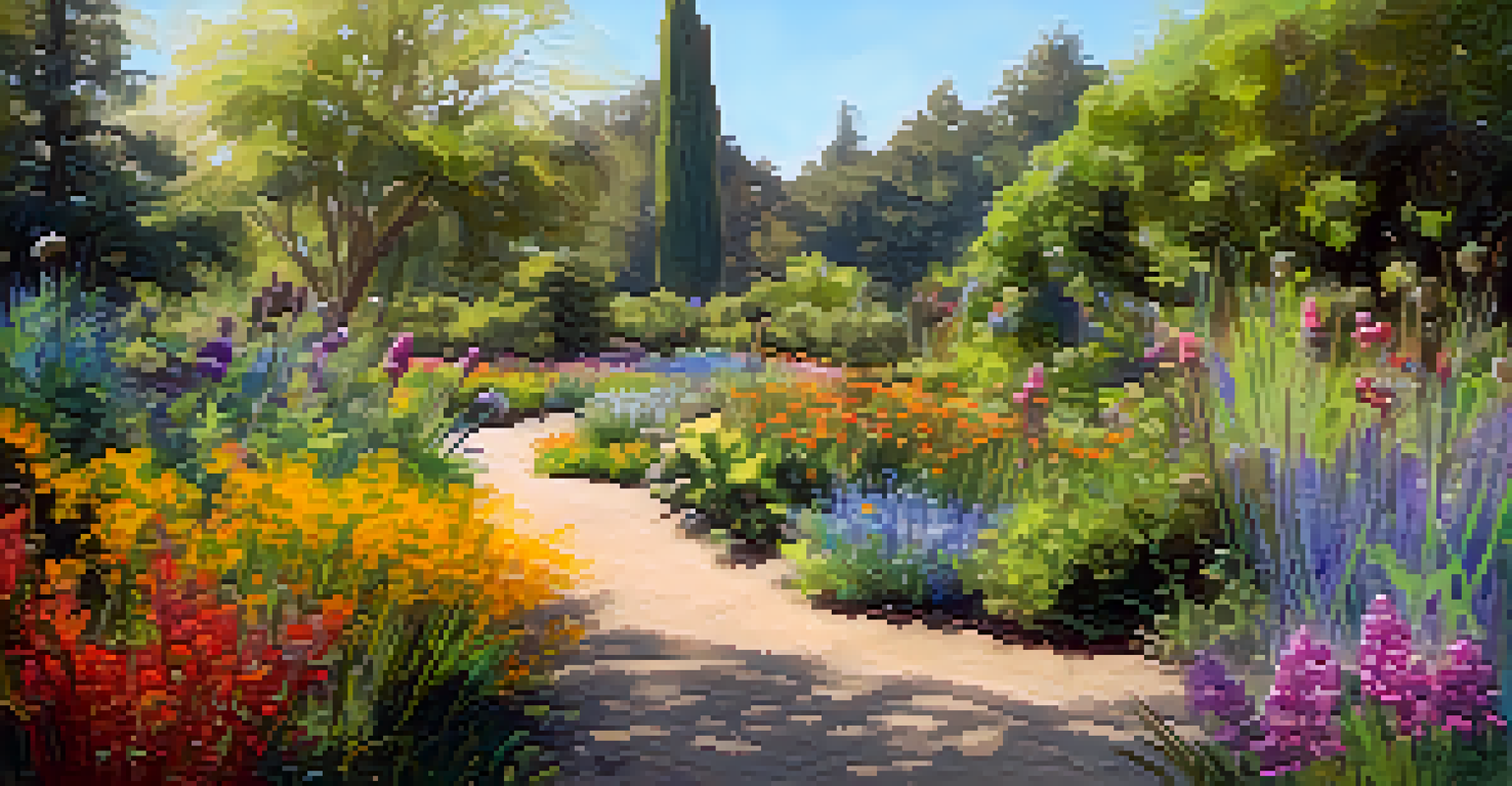The Historical Significance of Sacramento in Park Development

The Origins of Sacramento's Urban Parks
Sacramento's journey into urban park development began in the mid-19th century, influenced by the Gold Rush and population growth. As people flocked to the area, there was a pressing need for green spaces to accommodate the burgeoning community. Early park advocates recognized that parks could provide essential recreational areas amid the hustle and bustle of city life.
Parks are not just places to play; they are vital to the health and well-being of our communities.
One of the first parks established was the iconic Sacramento City Park, which laid the groundwork for future green spaces. This initial park not only served as a recreational hub but also as a gathering place for community events. The establishment of such parks highlighted the importance of green areas in urban planning and community well-being.
As Sacramento developed, the city faced challenges of overcrowding and pollution. The creation of parks was seen as a solution to improve air quality and provide residents with a respite from city life. This early understanding of the benefits of parks set the stage for future developments and advocacy for green spaces.
The Impact of the City Beautiful Movement
In the early 20th century, Sacramento was significantly influenced by the City Beautiful movement, which emphasized beautification and the creation of public spaces. This movement aimed to create aesthetically pleasing environments and integrate parks into the urban landscape. Sacramento embraced this philosophy, leading to the development of several key parks and public spaces.

Parks like McKinley Park and Land Park were designed with grand visions in mind, featuring picturesque landscapes and recreational facilities. These parks became essential parts of the city, providing residents with beautiful settings for leisure and community gatherings. The City Beautiful movement not only transformed Sacramento's parks but also inspired a sense of pride among its citizens.
Historical Roots of Urban Parks
Sacramento's urban parks originated in the mid-19th century as a response to population growth, providing essential green spaces for community well-being.
As a result of this movement's influence, Sacramento began to prioritize parks in its urban planning. This shift laid the foundation for future park expansions and improved the quality of life for residents. The legacy of the City Beautiful movement is still felt today in Sacramento's commitment to maintaining and enhancing its green spaces.
The Role of Parks in Community Health
Throughout history, parks have played a crucial role in promoting the health and well-being of Sacramento’s residents. With rising urbanization, concerns over public health emerged, leading to the recognition of parks as essential for physical and mental health. Access to green spaces was linked to lower stress levels and improved overall health.
The best thing about parks is that they bring people together, fostering community and culture.
Sacramento's parks not only offered areas for exercise but also provided safe spaces for families to enjoy outdoor activities together. Community events, such as farmers' markets and festivals, took place in these parks, further enhancing their role in promoting social connections. This focus on community health through parks has been a driving force in their continued development.
As awareness of the importance of mental health grew, so did the understanding of how parks contribute to mental well-being. Green spaces became recognized as places for relaxation, reflection, and rejuvenation. Sacramento's parks have become vital components of public health strategies, reaffirming the city's commitment to the welfare of its residents.
Environmental Stewardship and Parks
Sacramento's parks have also played a significant role in environmental stewardship, particularly as concerns about climate change have risen. The city recognized early on that parks are not just recreational spaces but crucial ecosystems that support biodiversity. Efforts to preserve natural habitats within park boundaries have been a priority for park development in Sacramento.
Initiatives to create native plant gardens and wildlife habitats have transformed parks into ecological sanctuaries. These efforts not only enhance the beauty of the parks but also educate the community about the importance of environmental conservation. By fostering a connection between residents and nature, Sacramento's parks promote a culture of stewardship.
Parks Enhance Community Health
Access to Sacramento's parks is linked to improved physical and mental health, fostering social connections through recreational activities and community events.
Moreover, parks in Sacramento have been integral in addressing urban heat and stormwater management. Trees and green spaces help mitigate heat islands and improve air quality, showcasing the multifaceted benefits of parks. The commitment to environmental stewardship through park development continues to shape Sacramento's identity as a progressive city.
Community Engagement in Park Development
Community engagement has been a cornerstone of Sacramento's park development throughout history. Residents have often been at the forefront of advocating for new parks and the improvement of existing ones. This grassroots involvement has fostered a sense of ownership and pride in local green spaces.
Public meetings and workshops have allowed community members to voice their needs and desires for park amenities. This participatory approach ensures that parks reflect the diverse interests of Sacramento's population, from sports facilities to picnic areas. By actively involving the community, the city has successfully created parks that resonate with residents.
Furthermore, volunteer programs have strengthened ties between residents and their parks. Community members participate in clean-up events, tree planting, and park maintenance, fostering a collective responsibility for these spaces. This model of engagement not only enhances park quality but also builds community cohesion.
Sacramento's Parks and Cultural Identity
Sacramento's parks are not just places for recreation; they serve as cultural landmarks that reflect the city's identity. Many parks host public art installations, concerts, and festivals that celebrate the region's rich cultural heritage. This integration of arts and culture into park spaces makes them vibrant centers of community life.
For instance, parks like Cesar Chavez Plaza and the Sacramento River Waterfront are often venues for cultural events, drawing residents and visitors alike. These gatherings not only provide entertainment but also strengthen community ties and foster cultural exchange. The role of parks in cultural identity highlights their importance beyond just green spaces.
Future of Parks Focuses on Sustainability
Sacramento's future park development will prioritize accessibility, technology integration, and climate resilience to meet the evolving needs of its residents.
Moreover, Sacramento's parks offer opportunities for storytelling and history sharing, connecting residents to their roots. Each park has its own stories and significance, and these narratives contribute to the city's collective memory. This cultural aspect of parks enriches the overall experience of living in Sacramento.
Future Directions for Sacramento's Parks
As Sacramento looks to the future, the evolution of its parks will continue to be shaped by changing needs and priorities. With growing populations and urban development, there will be a focus on creating more accessible, inclusive, and sustainable parks. This includes enhancing facilities for diverse activities and ensuring equitable access for all residents.
The integration of technology in park management is another exciting direction. Innovative solutions, like smart park features and apps for community engagement, can enhance visitor experiences. These advancements could lead to more efficient maintenance and better communication between city officials and park users.

Lastly, climate resilience will be a key focus in future park development. Sacramento's commitment to sustainability will likely lead to initiatives aimed at increasing green infrastructure and reducing environmental impact. By adapting to the challenges of the future, Sacramento's parks will continue to thrive as essential components of the city's landscape.